Featured Articles
Mares Beats Agbeko To Win Bantam Tourney..AVILA RINGSIDE
LAS VEGAS-A strong body attack and some missed low blows by the referee resulted in a majority decision for Abner Mares over IBF bantamweight champion Joseph “King Kong” Agbeko and with the victory he took the Showtime Bantamweight Tournament on Saturday.
Ghana’s Agbeko (28-3, 22 KOs) started slowly against Montebello’s Mares (22-0-1, 13 KOs) at the Hard Rock Hotel and Casino and suffered from some missed calls. Still, it was a very riveting contest and the title changed hands amid a pro-Mares crowd.
Mares opened the fight in the first round with both guns blazing to the head and the body. It was a plan of attack that Mares used throughout the fight. A combination dropped Agbeko near the end of the first round. A replay showed that it seemed to be a slip but Agbeko did not complain.
“I like to work the body,” said Mares. “Opponents tend to back away or they hold me down.”
Agbeko’s constant use of his arm to hold Mares’ head down resulted in numerous blows below the belt. Referee Russell Mora warned Agbeko many times to refrain from that tactic and it would later prove pivotal in the fight.
Agbeko also used jabs to keep Mares out of range of his power shots and that would be his main weapon. The Ghanian fighter kept the fight at arms distance but was tagged by a clean right hand by Mares in round two.
Mares and Agbeko turned round three into a tactical affair as the African fighter was more intent on counter punching. A counter left hook by Mares scored big as did his repeated body attacks.
A big overhand right by Agbeko wobbled Mares in round four but the Southern Californian maintained his balance and resumed the body attack. But it was clearly Agbeko’s round.
Mares landed a pretty left hook to the body and head combinations and a fierce counter right hand in round five to take back the momentum. Agbeko continued his jabbing attack and setting up the right hand.
Big counter lefts and rights continued Mares’ assault on Agbeko in round six. An accidental clash of heads resulted in a cut on Mares left eye as the strong African boxer began to score more often.
Round seven saw Mares slow down and allow the more tactical Agbeko to win the opening minute. Though both slugged it out near the end it was Agbeko who scored more clean blows.
In the eighth and ninth rounds Mares slowed down his attack and Agbeko began to score more with his jab and accidental head butts. But in the closing seconds of both rounds Mares scored with counter rights but Agbeko seemed to be busier.
Mares escaped a point deduction for a low blow and dropped Agbeko with a left hook in the 11th round. A replay of the knockdown showed that Mares left hook was indeed below the belt. That knockdown did not proved to be the winning margin as Mares won by majority decision 113-113 and 115-111 on two score cards to win the IBF world title and the finale of the Showtime Bantamweight Tournament.
“The first knock down was good and the second one I hit him on the belt,” said Mares adding that Agbeko’s tactic of using his arm to force Mares head down prompted the blows below the belt. “He (Agbeko) was holding me down.”
Mares wins the world title and claims as the best bantamweight in the world by winning the tournament. But out there is WBO-WBC world titleholder Nonito “Filipino Flash” Donaire that could result in the ultimate bantamweight finale.
“I’m hoping for anything,” said Mares about possibly fighting Donaire in a mega showdown.
Not pleased with the outcome was Agbeko.
“I felt I had two opponents in Abner Mares and the referee,” said Agbeko. “The referee took away my title tonight not Abner Mares.”
Other bouts
Texas heavyweight Eric Molina 18-1, 14 KOs) started slowly against Kentucky’s Warren Browning (14-2-1, 9 KOs) who started quickly against the favored fighter. But it didn’t last long as Molina’s pinpoint punching proved too much in winning by knockout and grabbing the vacant WBC U.S. heavyweight title.
Browning bulled his way inside with his strength and fired overhand rights and uppercuts to score early inside against Molina in the first round. But that would be it.
Round two saw Molina aggressively fire combinations to create more space. Though several blows landed Browning clowned at the attempt, then while moving into punching range a short right hand floored the Kentuckian. He beat the count and jumped back to his feet. Back to attack mode Browning was not shy but was hit with a right to the body then a right to the chin and down he went again. Once more he beat the count.
Molina began round three looking to drop that big right hand and found an opening as Browning moved to fire a blow. Down he went again but this time referee Robert Byrd stopped the fight at 26 seconds of the round.
“He came out wild, I stayed calm and took him out,” said Molina who fights out of Lyford, Texas. “They (fans) know there is a true Mexican heavyweight contender.”
Former flyweight world champion Eric Morel (45-2, 23 KOs) proved he can hang with the talented bantamweights by steamrolling Daniel Quevedo (13-12-2, 8 KOs) in four rounds by technical knockout.
Puerto Rico’s Morel, who is also known as “Little Hands of Steel,” proved it by knocking down the usually sturdy chinned Quevedo twice before the Mexican fighter remained on his stool at the end of round four. A perfectly placed right uppercut floored Quevedo in round two and a four punch combo did the job in round one.
Though not ranked in the top 10 in the WBO bantamweight division where dynamic Nonito Donaire holds the crown, Morel is eager to face the “Filipino Flash.”
“I would definitely be ready for him and definitely be the next WBO bantamweight champion,” said Morel.
A listless Carlos Molina (14-0-1, 7 KOs) dragged through eight rounds with Mexico’s Juan Manuel Montiel (6-4-3, 1 KO) in a fight that was scheduled to be a junior welterweight bout but was moved up in weight when the California boxer was unable to make weight. The eight round fight ended in a split draw.
Molina just didn’t have his A game perhaps due to the attempt to make the agreed upon weight limit. Though he was the bigger puncher he just couldn’t manage enough energy to offset the high energy output of Montiel.
Judge Lisa Giampa scored it 77-75 for Montiel and Dwayne Ford tabbed 77-75 Molina, Dick Houseman had it 76-76 resulting in a split draw.
Newly arrived Cuban refugee Angelo Santana (11-0, 8 KOs) blasted out Germany’s Ramzan Adaev (8-1-1, 7 KOs) with a neck wrenching left hand during a heavy exchange. It was the second knockdown of round two and the impact from that punch was heard throughout the arena. Santana won by knockout at 2:06 of round two of the junior welterweight match. It was Adaev’s first pro loss.
“I wanted to make a statement to my promoter, Don King; the sport of boxing; and boxing fans everywhere that I am ready to fight the best at the 140-pound limit,” Santana said in the ring after the fight. “I want Brandon Rios or Vernon Paris.”
-

 Featured Articles3 weeks ago
Featured Articles3 weeks agoAvila Perspective, Chap. 330: Matchroom in New York plus the Latest on Canelo-Crawford
-
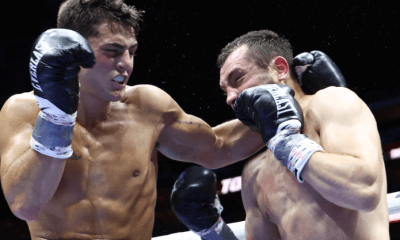
 Featured Articles2 weeks ago
Featured Articles2 weeks agoVito Mielnicki Jr Whitewashes Kamil Gardzielik Before the Home Folks in Newark
-
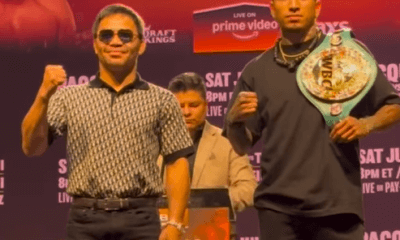
 Featured Articles4 weeks ago
Featured Articles4 weeks agoAvila Perspective, Chap 329: Pacquiao is Back, Fabio in England and More
-
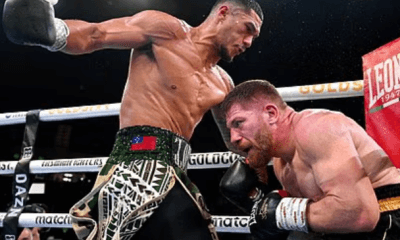
 Featured Articles3 weeks ago
Featured Articles3 weeks agoOpetaia and Nakatani Crush Overmatched Foes, Capping Off a Wild Boxing Weekend
-
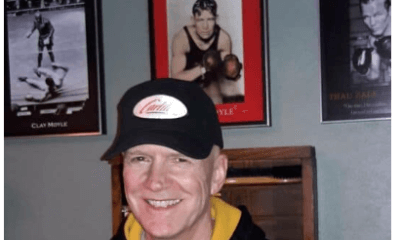
 Featured Articles2 weeks ago
Featured Articles2 weeks agoCatching Up with Clay Moyle Who Talks About His Massive Collection of Boxing Books
-

 Featured Articles4 weeks ago
Featured Articles4 weeks agoFabio Wardley Comes from Behind to KO Justis Huni
-
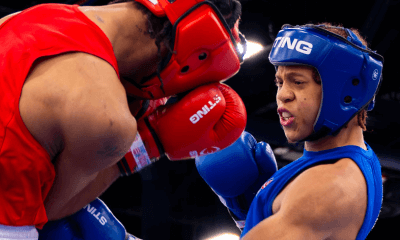
 Featured Articles1 week ago
Featured Articles1 week agoMore Medals for Hawaii’s Patricio Family at the USA Boxing Summer Festival
-
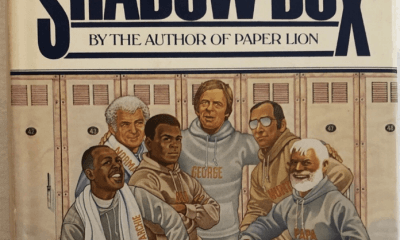
 Featured Articles4 weeks ago
Featured Articles4 weeks agoDelving into ‘Hoopla’ with Notes on Books by George Plimpton and Joyce Carol Oates















